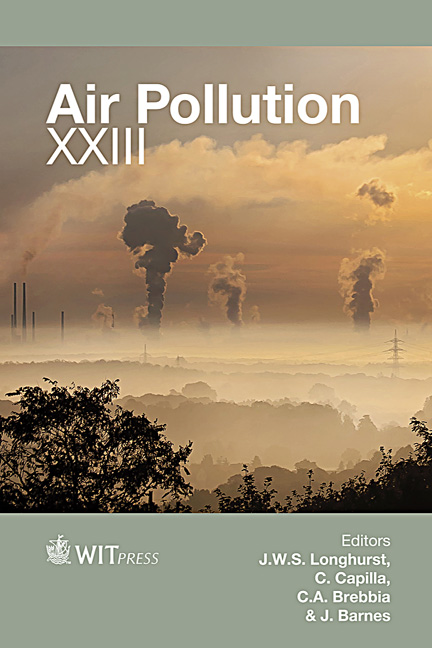Primary Particulate Matter Emissions And Trends From Canadian Agriculture
Price
Free (open access)
Transaction
Volume
198
Pages
12
Page Range
143 - 154
Published
2015
Size
860 kb
Paper DOI
10.2495/AIR150121
Copyright
© 2015 Her Majesty the Queen in Right of Canada, as represented by the Minister of Agriculture and Agri-Food Canada
Author(s)
E. Pattey, G. Qiu, S. Fiset, E. Ho, D. MacDonald, C. Liang
Abstract
The Agricultural Particulate Matter Emissions Indicator (APMEI) has been developed to estimate Particulate Matter (PM) emissions from agriculture in Canada and to assess potential emission-reduction measures. The APMEI estimates atmospheric emissions of primary PM from wind erosion, land preparation, crop harvesting, fertilizer and chemical application, crop residue burning, grain handling, pollen, animal feeding operations and animal carcass burning for the Census years from 1981 to 2011. The APMEI assessed both the state and the trend of emissions of primary PM resulting from Canadian agricultural activities. Total PM emissions from agricultural sources in Canada decreased from 1981 to 2011, with a decline of 63% for TSP, 58% for PM10 and 61% for PM2.5. In 2011, Canadian agricultural PM emissions were 3066 kt for TSP, 1190 kt for PM10 and 276 kt for PM2.5. Wind erosion, land preparation and crop harvesting were the principal sources of particulate emissions from cultivated cropland. Wind erosion alone generated about half of the total agricultural PM emissions in Canada. Land preparation was the second largest source of agricultural PM emissions, accounting for 17% to 36% of the total depending on the PM classes, and crop harvesting contributed 10% of the total PM emissions. Since there is a seasonal pattern to the dominant sources of PM emissions, the monthly emissions from the three main agricultural sources were quantified and are presented for 2011.
Keywords
agriculture, wind erosion, crop harvesting, land preparation, corn pollen, emission factor, particulate matter, particles, air quality, air contaminants





